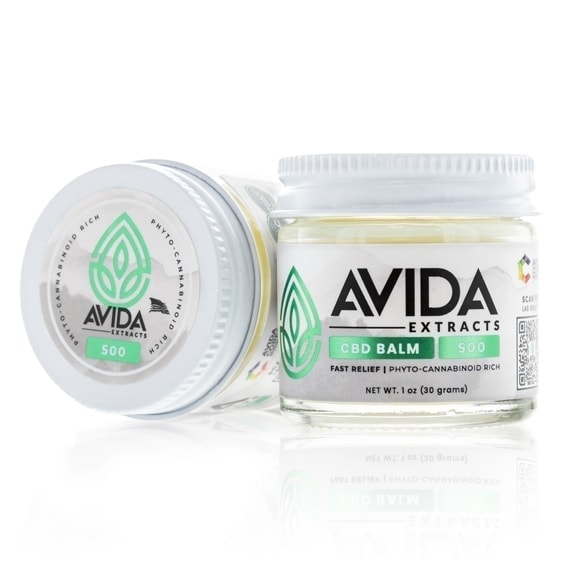Welcome to the Avida CBD Hemp Glossary, your resource for understanding the diverse world of Hemp.
Our hemp glossary is curated to provide clear explanations of the various terms used in the hemp industry. Our Glossary is designed to be your #1 resource to navigate the complexities of hemp terminology with ease.
From understanding the legal limits of THC to understanding what CBD Decarboxylation means and everything in between, our glossary covers a wide spectrum, ensuring you have a source for all your hemp-related questions.
We recommend you check out our Cannabinoid Glossary and Terpene Glossary after you’ve given this page a read.
The information shared in this post is for informational purposes only and should not be considered as a replacement for professional medical advice. The statements made on this article regarding CBD have not been evaluated by the Food and Drug Administration. The efficacy of CBD has not been confirmed by FDA-approved research. CBD is not intended to diagnose, treat, cure or prevent any disease. Consult your doctor before using CBD, especially if you have any medical conditions. Your doctor can help determine if CBD is right for you.
0.3% THC Limit
0.3% is the legal limit for THC levels in hemp plants and CBD products. This minimal amount of THC does not typically produce intoxicating effects and aligns with federal regulations for hemp-derived products
2-AG
2-AG is an endocannabinoid that is produced by the endocannabinoid system within the human body. It interacts with CB1 and CB2 receptors as part of the endocannabinoid system, contributing to various biological functions.
2018 Farm Bill
The 2018 Farm Bill legalized the cultivation, processing, and sale of hemp and hemp-derived products with THC levels at or below 0.3%.
Aeroponics
Aeroponics is a cultivation method that involves growing hemp plants without soil. In aeroponic growing, plants’ roots are suspended in the air and regularly misted with nutrient-rich water. This technique allows for precise control over hydration and nutrients while maintaining a clean growing environment.
Alcohol extraction
During alcohol extraction, processors soak hemp biomass in solvents, such as ethyl or isopropyl alcohol, to dissolve and extract the most desirable components of the hemp plant. The solvent used is then evaporated, leaving a concentrated cannabis extract behind.
Anandamide (AEA)
Anandamide is an endocannabinoid naturally produced in the human body. It interacts with the endocannabinoid system and is associated with various biological functions.
Biphasic Effect
Biphasic refers to the effects of substances that produce different results at higher doses than they do at lower concentrations. For example, CBD may interact differently at varying dosage levels.
Broad-spectrum
Broad-spectrum formulations combine CBD with the minor cannabinoids and terpenes found in hemp while eliminating the trace amounts of THC found in full-spectrum formulations. These formulations offer a preferable alternative to isolates.
Cannabinoids
Cannabinoids are naturally-occurring compounds synthesized by the hemp plant in response to heat and light. They include well-known compounds like CBD, as well as “minor” cannabinoids such as CBG, CBN, and CBC.
CBD Concentrates
Concentrates are the most potent form of CBD products and distill all of the most desirable components of the hemp plant, including CBD, minor cannabinoids, and terpenes, into various forms, including isolate, wax, shatter, oil, and distillate.
CBD Decarboxylation
Decarboxylation is the process by which CBD products are created. It involves heating raw hemp plants to turn raw, acidic precursors to CBD, such as CBDA and CBGA, into compounds like CBD and CBG. This transformation influences the overall composition of hemp extracts.
CBD Distillate
CBD distillate is a form of CBD concentrate that harnesses CBD in its purest, most refined, and most potent state. It may contain minor cannabinoids and naturally-occurring hemp terpenes, with trace amounts of THC at or below the legal limit of 0.3% in full-spectrum distillate.
Certificate of Analysis (COA)
A CoA is a document from a third-party laboratory that specifies the levels of cannabinoids and terpenes found in any given hemp product while verifying that the product is free of contaminants, pesticides, heavy metals, and other unsafe residuals.
Chlorophyll
Chlorophyll is a green pigment found in plants that plays a critical role in photosynthesis and can affect the taste and color of CBD oil. Some processing methods remove chlorophyll to improve product flavor.
Clinical Endocannabinoid Deficiency
Researchers have examined the concept of clinical endocannabinoid deficiency (CED) as a theoretical area of study within the broader exploration of the endocannabinoid system’s role in biological processes. Some suggest that CED may relate to variations in endocannabinoid levels, though research in this area is ongoing.
Closed-Loop Extraction
In closed-loop extraction, the extraction process takes place within a sealed system where solvents used are constantly recaptured and reused, rather than being released into the atmosphere. This method is environmentally friendly and used to extract various compounds, including CBD.
CO2 Extraction
CO2 extraction is a preferred method for extracting cannabinoids and terpenes from the hemp plant. It utilizes carbon dioxide under high pressure and temperature to extract materials such as cannabinoids and terpenes from hemp biomass, resulting in clean, pure products.
Cold-Pressed CBD Extraction
This extraction method involves withdrawing cannabinoids from hemp biomass without the application of heat. Mechanical pressure is applied to raw hemp plants to release CBD and other cannabis compounds.
Crude Hemp Oil
Crude hemp oil is the initial form of CBD when it is first extracted from the flowers, leaves, and stalks of the hemp plant. It is further refined through various processes to create CBD products.
Dabs
Dabs are a form of cannabis concentrate with a waxy, amber-colored appearance. They are commonly heated and inhaled, offering a potent and aromatic hemp experience with cannabinoids and terpenes.
Dispensary
Dispensaries are legally authorized to sell cannabis products for either medical or recreational purposes. They often have knowledgeable staff who provide product recommendations to customers.
Dosing
Dosing refers to the amount of CBD consumed per serving, and it is adjusted based on individual needs and the specific CBD product being used.
Dronabinol, Sativex & Nabilone
Sativex is a synthetic, prescription form of CBD FDA-approved for the treatment of seizures and convulsions. Dronabinol is a synthetic, pharmaceutical form of THC used to prevent chemotherapy-related nausea and vomiting, while Nabilone is a THC analog used as an antiemetic and appetite stimulant for individuals with chronic conditions.
Edibles
Hemp-derived edibles, such as gummies, contain CBD and various other minor cannabinoids. They offer an alternative consumption method with a variety of flavors and formats.
Endocannabinoid Enzymes
The endocannabinoid system includes enzymes such as FAAH and MAGL, which break down endocannabinoids as part of the body’s natural biological processes.
Endogenous
Endocannabinoids refer to cannabinoids that are produced within the human body, as opposed to exogenous cannabinoids derived from plants.
Entourage Effect
The “entourage effect” refers to the natural interaction between CBD, terpenes, and minor cannabinoids naturally occurring alongside one another in the hemp plant.
Extraction
Extraction processes are used to withdraw cannabinoids and terpenes from raw hemp biomass. After extraction, cannabinoids and terpenes are in the form of crude hemp oil, which is further refined to create CBD products.
Fatty Acids
Fatty acids, such as linoleic acid, are naturally occurring in hemp plants. They contribute to the plant’s overall composition and are often present alongside cannabinoids like CBD.
Flavonoids
Flavonoids are naturally occurring compounds found in various plants, including hemp. They contribute to the plant’s color, aroma, and overall composition, often appearing alongside cannabinoids and terpenes in hemp CBD products.
Full Spectrum (Whole Plant)
Full spectrum formulations contain the entire range of cannabinoids, flavonoids, and terpenes naturally found in the hemp plant, including trace amounts of THC at or below 0.3%.
Genetically Modified Organism (GMO)
GMOs have been genetically altered to provide desired traits.
Heavy Metals & Pesticides
Heavy metals and pesticides are common contaminants in low-quality CBD products. Third-party lab tests (CoAs) verify the absence of these harmful contaminants in CBD products.
Hemp Flower
The majority of cannabinoids, terpenes, and flavonoids are concentrated in the hemp plant’s flowers, which are covered by resinous glands rich in cannabis compounds.
Hemp vs. Marijuana
Hemp and marijuana are two distinct varieties of the cannabis plant. Hemp contains CBD and only trace amounts of THC, while marijuana is high in THC and contains minimal CBD.
Hemp seed oil
Hempseed oil does not contain cannabinoids like CBD but is rich in other compounds such as fatty acids, vitamins, and proteins.
Homeostasis
Homeostasis refers to the body’s ability to maintain internal stability despite changing external conditions. The endocannabinoid system is studied for its involvement in various biological functions, and CBD is one of many compounds that interact with this system in ways that continue to be explored.
Homogeneity
Homogeneity refers to the consistent distribution of cannabinoids and terpenes throughout CBD products, ensuring even dosing and effectiveness.
Hybrid
Hybrid hemp strains combine sativa and indica genetics, offering a diverse aromatic and flavor profile that varies depending on the strain.
Hydroponics
Hydroponic growing is an indoor cultivation method in which hemp plants are grown in water without soil. This method improves nutrient access and reduces the risk of contaminants.
Indica, Sativa, and Hybrid Strains
Hemp strains come in three varieties: indica, sativa, and hybrids, each with distinct plant characteristics and aromatic profiles.
Industrial & Agricultural Hemp
Industrial and agricultural hemp are grown for various purposes, including CBD production. They contain low levels of THC, making them legal to grow under the 2018 Farm Bill.
Isolate
CBD isolate is a purified CBD extract containing only CBD, without other cannabinoids or terpenes.
MCT oil
MCT oil is a fatty acid from coconut oil used as a base in CBD tinctures to improve bioavailability.
Milligram & Gram
Milligram is one-thousandth of a gram, commonly used to measure CBD dosage.
Milliliters (ml)
Milliliters are used to measure liquid, often corresponding to milligrams in CBD tincture dosages.
Milliamps (mAh)
Milliamps are used to measure vaporizer battery life.
Non-Psychoactive
Refers to substances like CBD that do not alter perception or induce intoxicating effects.
Pharmacokinetics & Pharmacodynamics
Pharmacokinetics refers to how compounds like CBD move through the body, including absorption, distribution, and metabolism. Pharmacodynamics focuses on how these compounds interact with biological systems at various concentrations.
Phytonutrients
Phytonutrients are naturally occurring compounds in plants that influence their color, aroma, and flavor. Hemp contains various phytonutrients, including cannabinoids, terpenes, flavonoids, and fatty acids, which contribute to the plant’s unique characteristics.
Plant Sterol
Plant sterols like B-sitosterol and campesterol are naturally occurring in hemp. They are part of the plant’s natural composition and often appear alongside cannabinoids and other botanical compounds.
Propylene Glycol
Propylene Glycol (PG) is used in CBD vape oil as a thinning agent to improve vapor flow.
Route of Administration
Route of administration refers to how CBD enters the body, affecting the onset and effects of CBD products.
Sinsemilla
Sinsemilla refers to the cultivation of female cannabis plants without males to ensure seedless, potent flowers.
Solvents
Solvents like ethanol or CO2 are used in the extraction process to separate cannabinoids and terpenes from raw plant material.
Terpenes
Terpenes are aromatic compounds naturally found in various plants, including hemp. They contribute to the plant’s distinct fragrance and flavor profile, playing a key role in its overall sensory experience.
Tinctures
Tinctures are liquid hemp extracts combined with an oil base for sublingual administration.
Topicals
CBD topicals are applied directly to the skin, offering a convenient way to incorporate hemp-derived compounds into skincare routines.
Vegetable Glycerin
Vegetable glycerin is used in vapes to provide smoother smoke and more efficient delivery.
Vitamin E
Vitamin E is a naturally occurring antioxidant that plays a role in protecting plant oils. It is sometimes included in cannabis topicals as part of their formulation.
Vapes
Vaporizers heat CBD vape juice to convert it into a vapor that can be inhaled, allowing for a distinct aromatic experience.




